

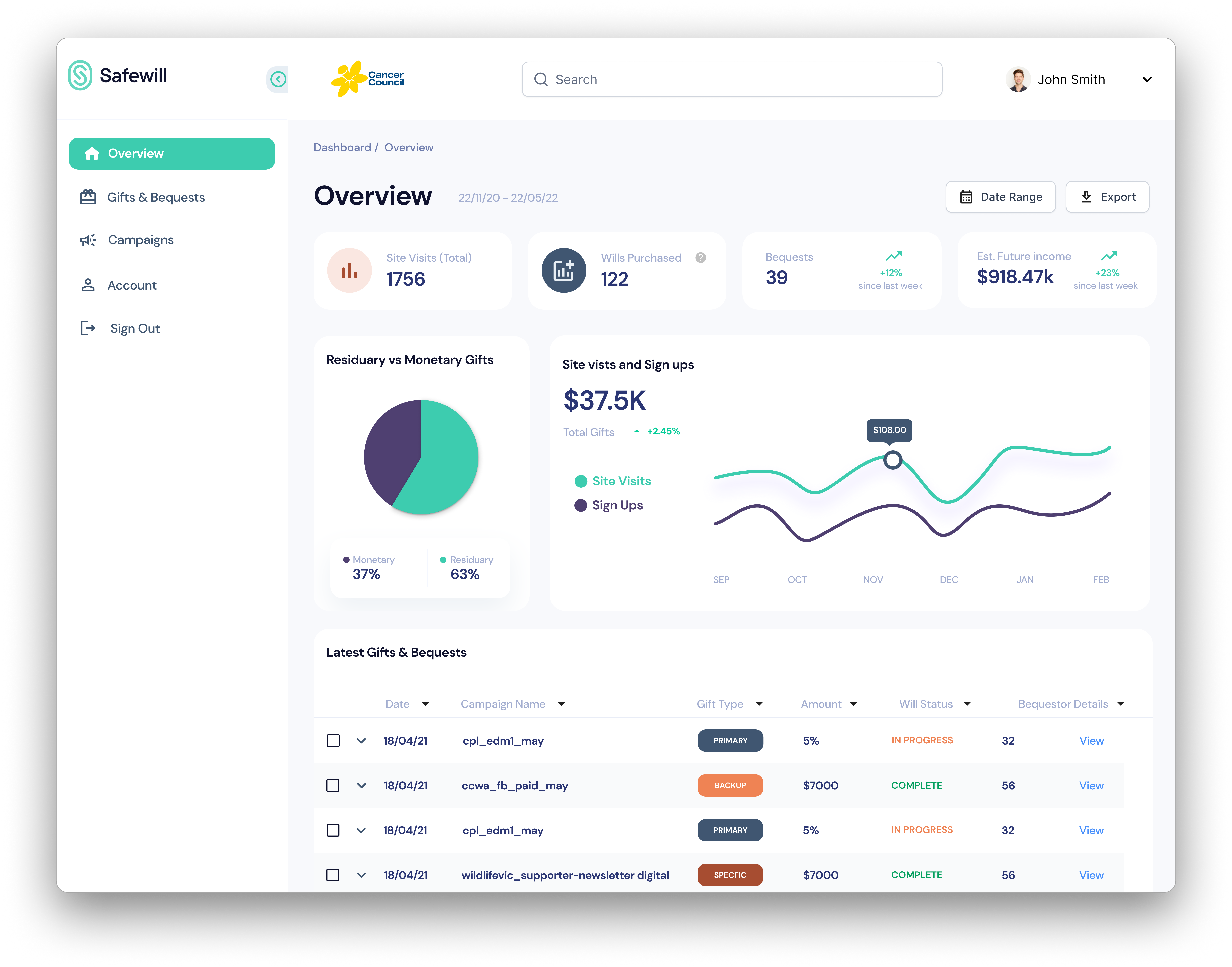
Jun - Sept /2022
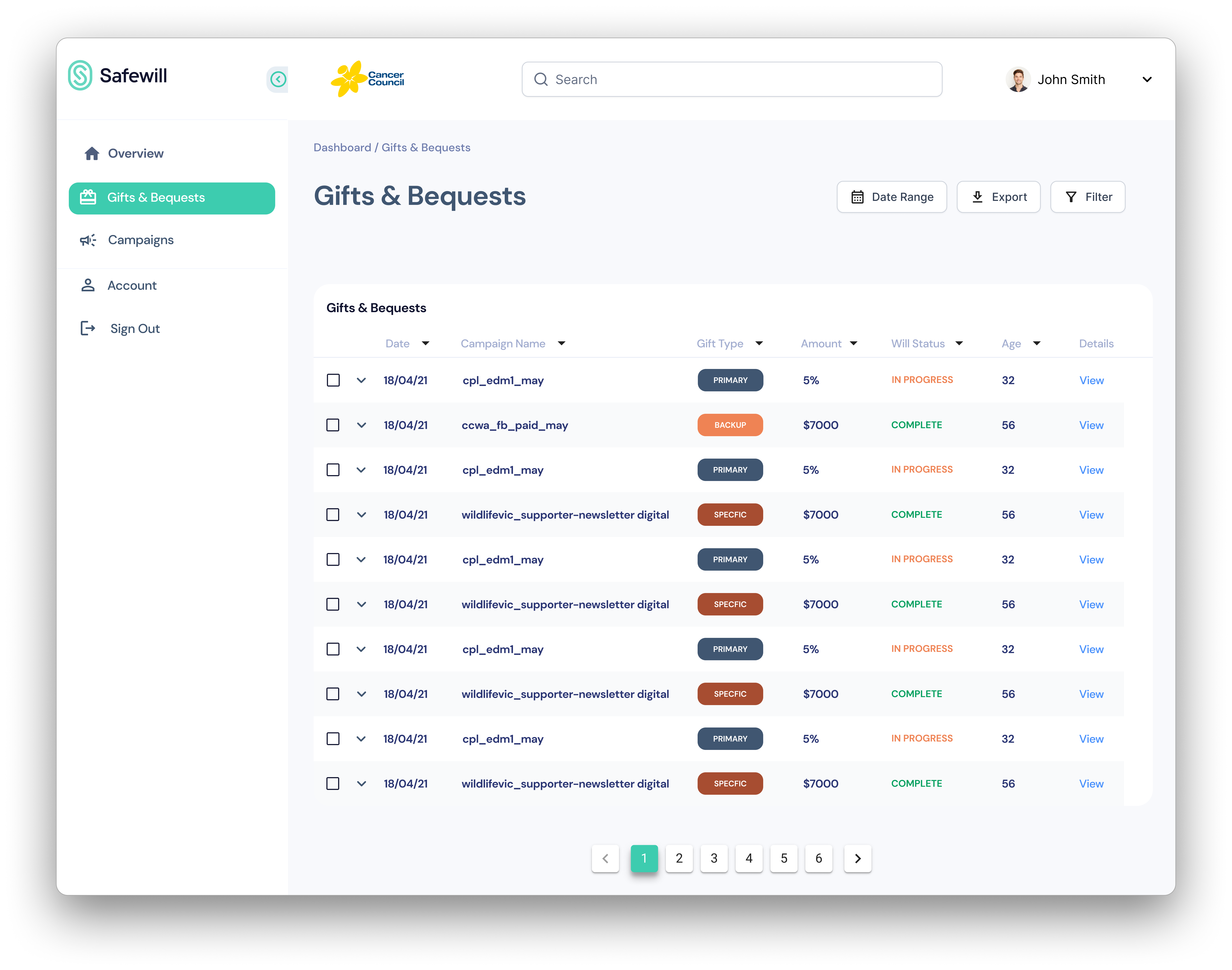
End-to-end: research, ideation, flows, wireframes, mockups, hi-fi design, implementation, iteration.
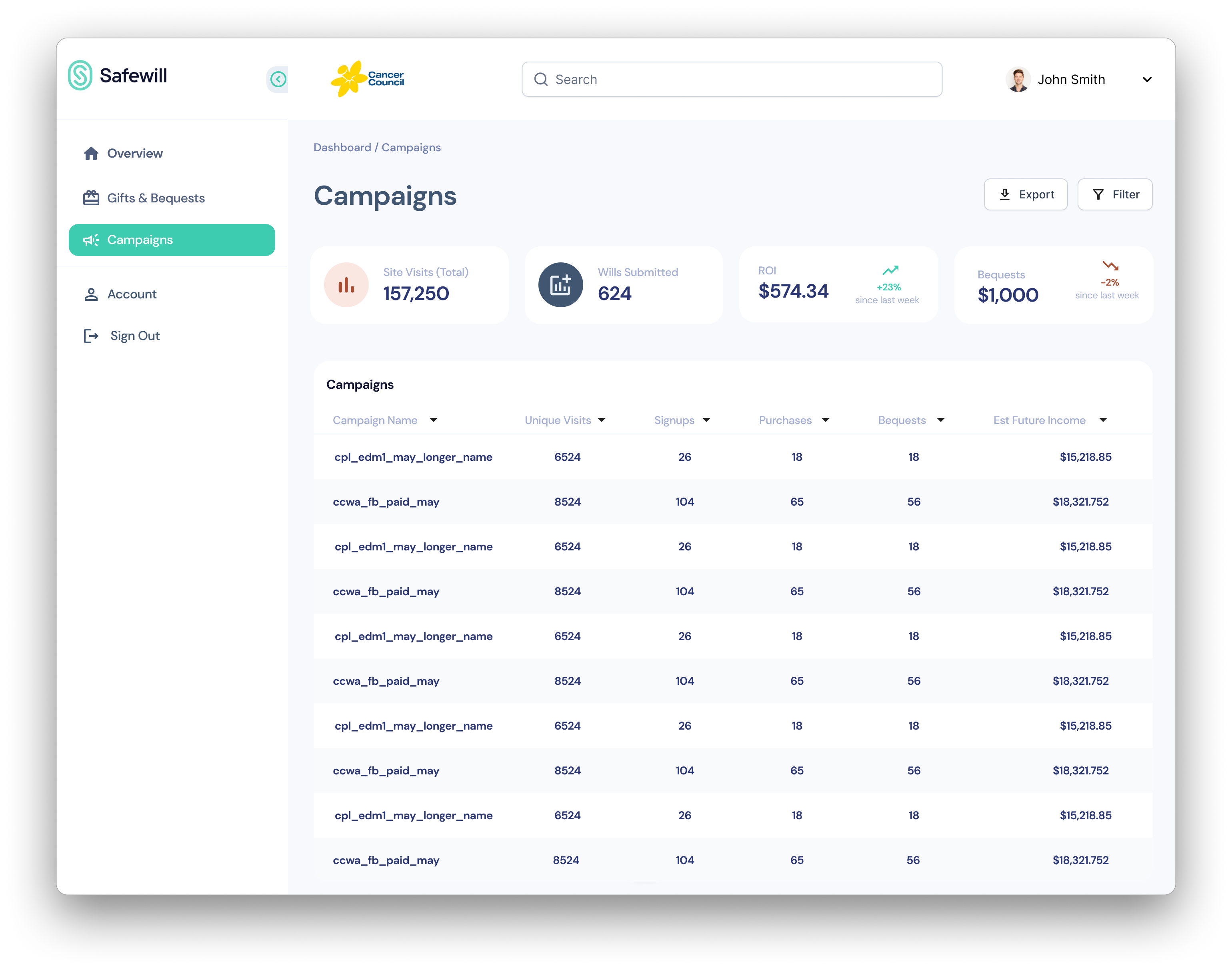
• B2B team increased customer acquisition by 12% post-launch.
• Decreased customer churn by 7%
Single handedly delved deep into research and made sure to communicate findings to stakeholders so that the team was informed and decisions could be cataloged and backed up.
As the Product Owner of our Scrum team, I have managed the project's backlog and collaborated with engineers to prioritise features and plan releases.

Safewill works with charities such as the Cancer Council and Unicef to give them exposure in the
Will-making flow at app.safewill.com. Users making their Will can then leave a part of their
estate to charities.
Charities then need to visualise those bequests to understand who is leaving a part of their
estate for them.

Charities often face challenges in visualising and analysing bequests, understanding their
campaign performance, and gaining insights into their user demographics. Without adequate tools,
they struggled to optimise their fundraising efforts and efficiently allocate resources.
Our goal was to bridge this gap by understanding what was important for charities when wanting
to have relationships with their bequestors and analysing a marketing campaign.

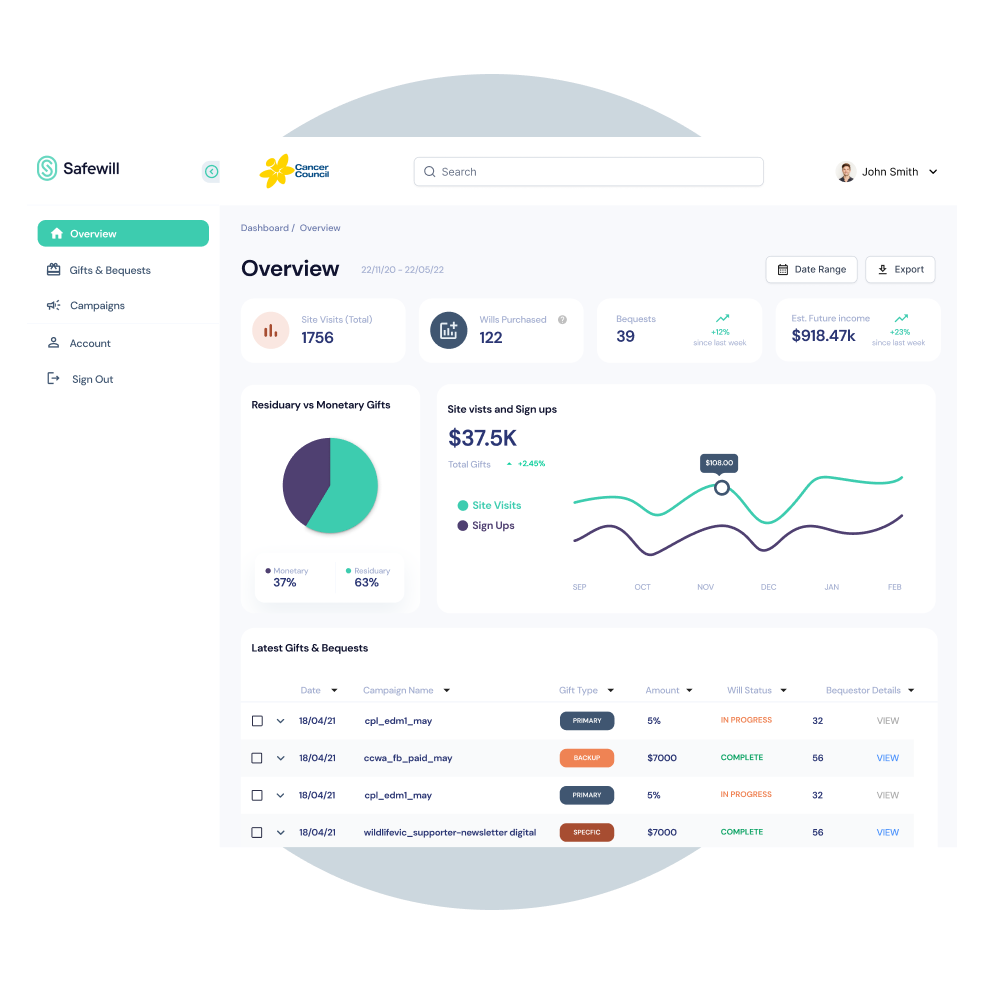
Charities do not have a lot of capital to work with. That means it is of utmost importance to properly allocate their resources, and a lot of that comes with making decisions based on what is working and what isn’t.
Enabling charities to understand who their ‘customer’ is so that they can nurture relationships with them so that these users donate is one of the best ways to raise revenue and fight for the cause for a charity.
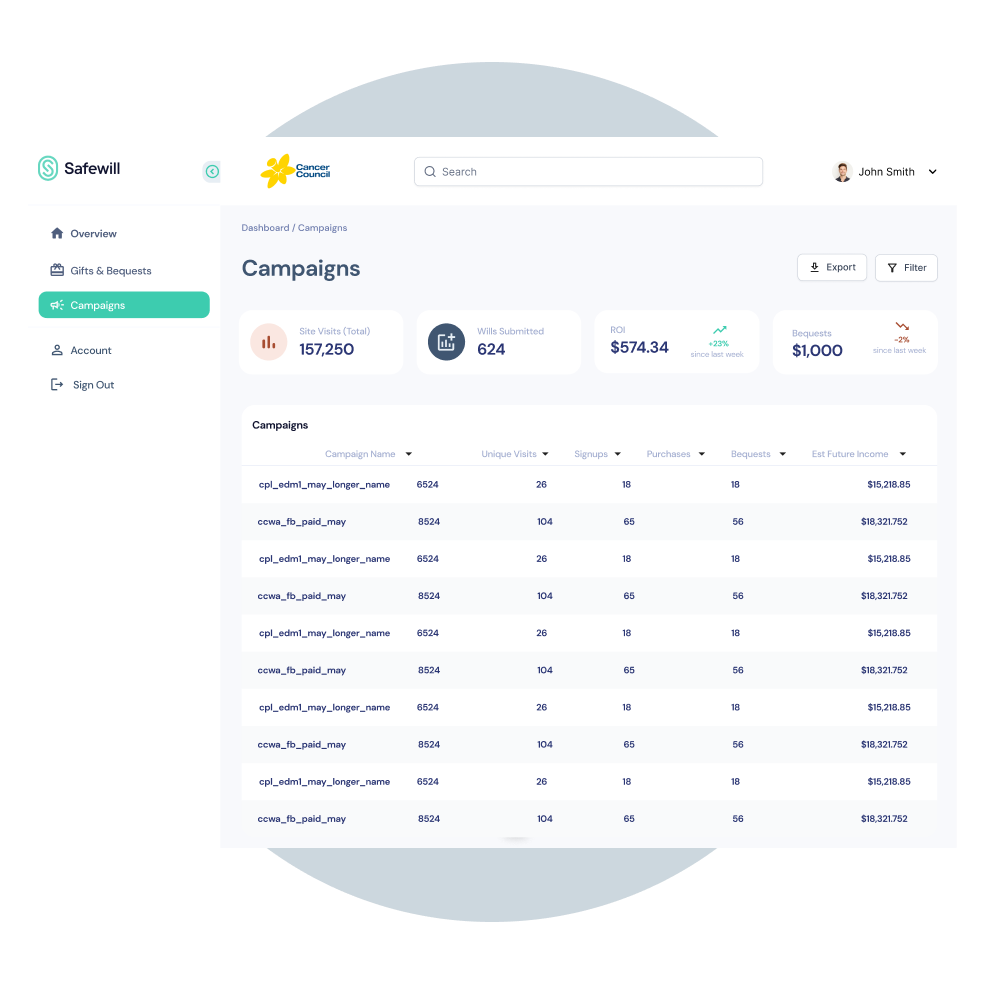
In the initial stages of our project, we realised that creating a user-friendly and data-driven
dashboard would require a deep understanding of the needs and pain points faced by charities in
managing their bequests and campaigns effectively.
We sought to leverage technology to provide a solution that would enable charities to visualise
their data, analyse trends, and make informed strategic decisions.
We began the project with a set of assumptions, including the belief that charities would greatly
benefit from having access to real-time data and actionable insights.
We assumed that by streamlining data collection and visualisation, we could empower charities to
optimise their campaigns, identify trends, and better understand their bequestor base. However,
we recognised the need to validate these assumptions through user research and testing.
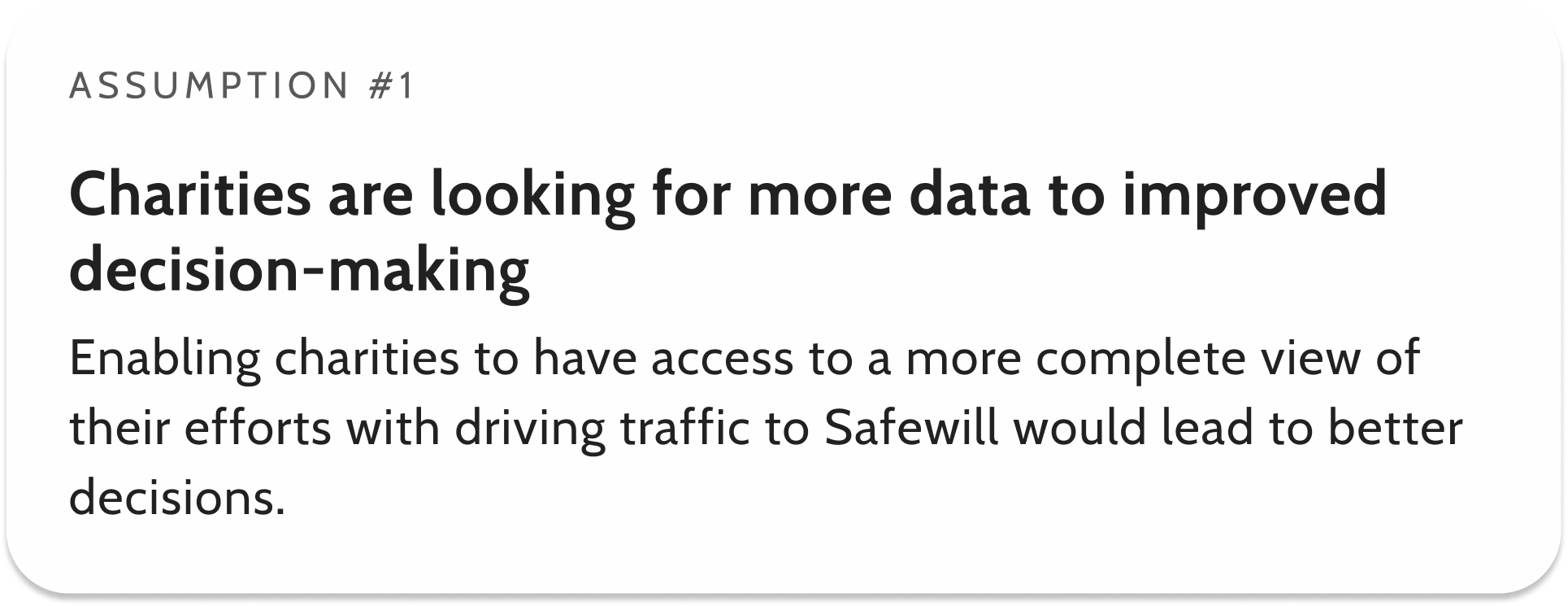
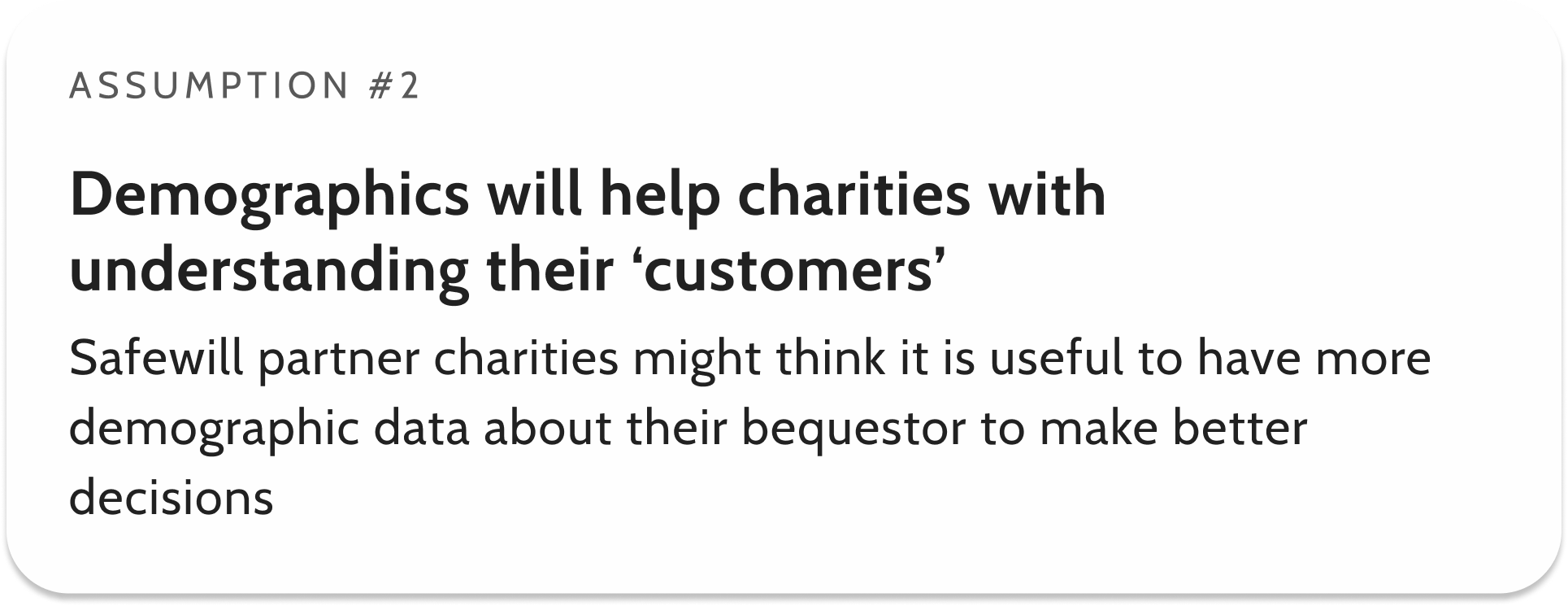
Our hypothesis was that by providing charities with a user-friendly dashboard that offers intuitive data visualisation, advanced analytics, and demographic insights, we could empower them to enhance their fundraising efforts, drive greater engagement, and make data-driven decisions for more effective resource allocation.
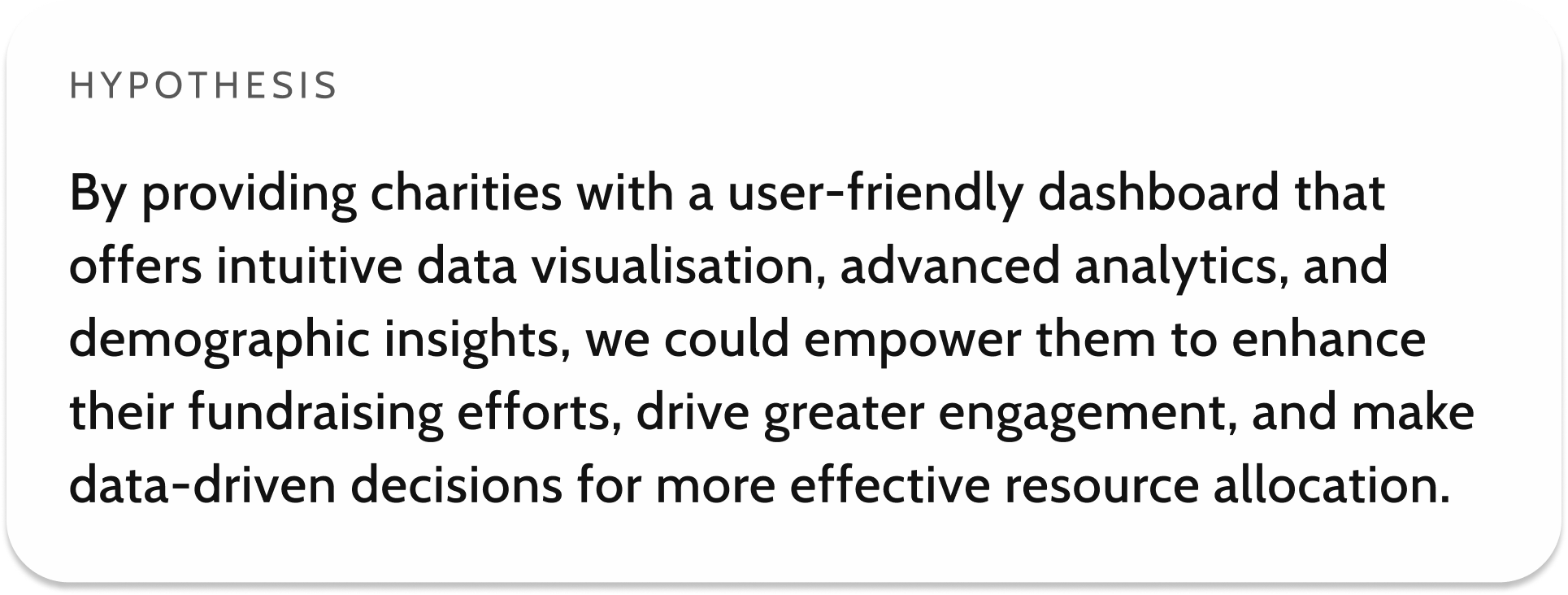
The primary target users for our charity dashboard were the staff and stakeholders of the partner
charities.
These individuals would include fundraising managers, marketing teams, and executive directors
who are responsible for overseeing and optimising the organisations fundraising campaigns and
managing bequests.

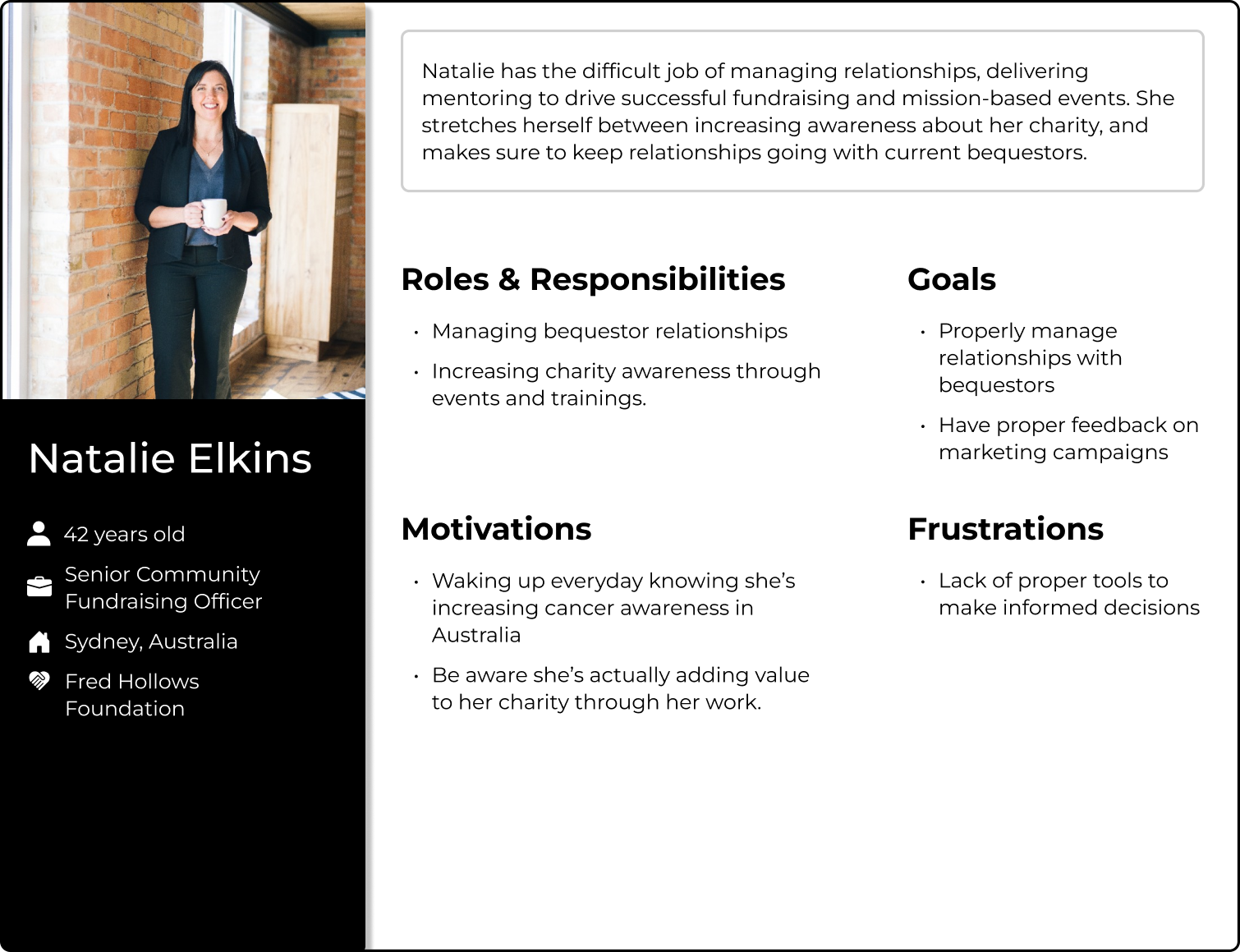
Goals
• How they use the Safewill Dashboard
• What problem the Dashboard solves for them
• What are their biggest challenges with it
• What they would like to see in it and why

I, other designers, and engineers caught up with sales and customer success teams a few times
to understand some of their noted feature requests, pain points, and general comments made
by charities.
The goal with these meetings was to:
• Correlate pain points found with users to insights sales and CS teams had noted
• List out feature requests and the reasons as to why the customer wanted/needed these
features
• Understand their sales strategy going into the next 12-18 months and how it related back
to company vision to then translate that vision into the next iteration

Charities were after more marketing campaign data visualisation so that they could take better decisions.
Charities feel like they lack exposure and therefore awareness. Since Safewill provides exposure to them, they'd like to focus more on relationships with already existing bequestors.
Charities would like to have more integrations with applications so that they can leverage bequestor data to take better, more informed decisions.

How Might We...
· Provide charities with intuitive data visualisation to understand their bequests and campaign
performance?
· Streamline the reporting process to save time and effort for charities?
· Enable charities to gain actionable insights into their user demographics?
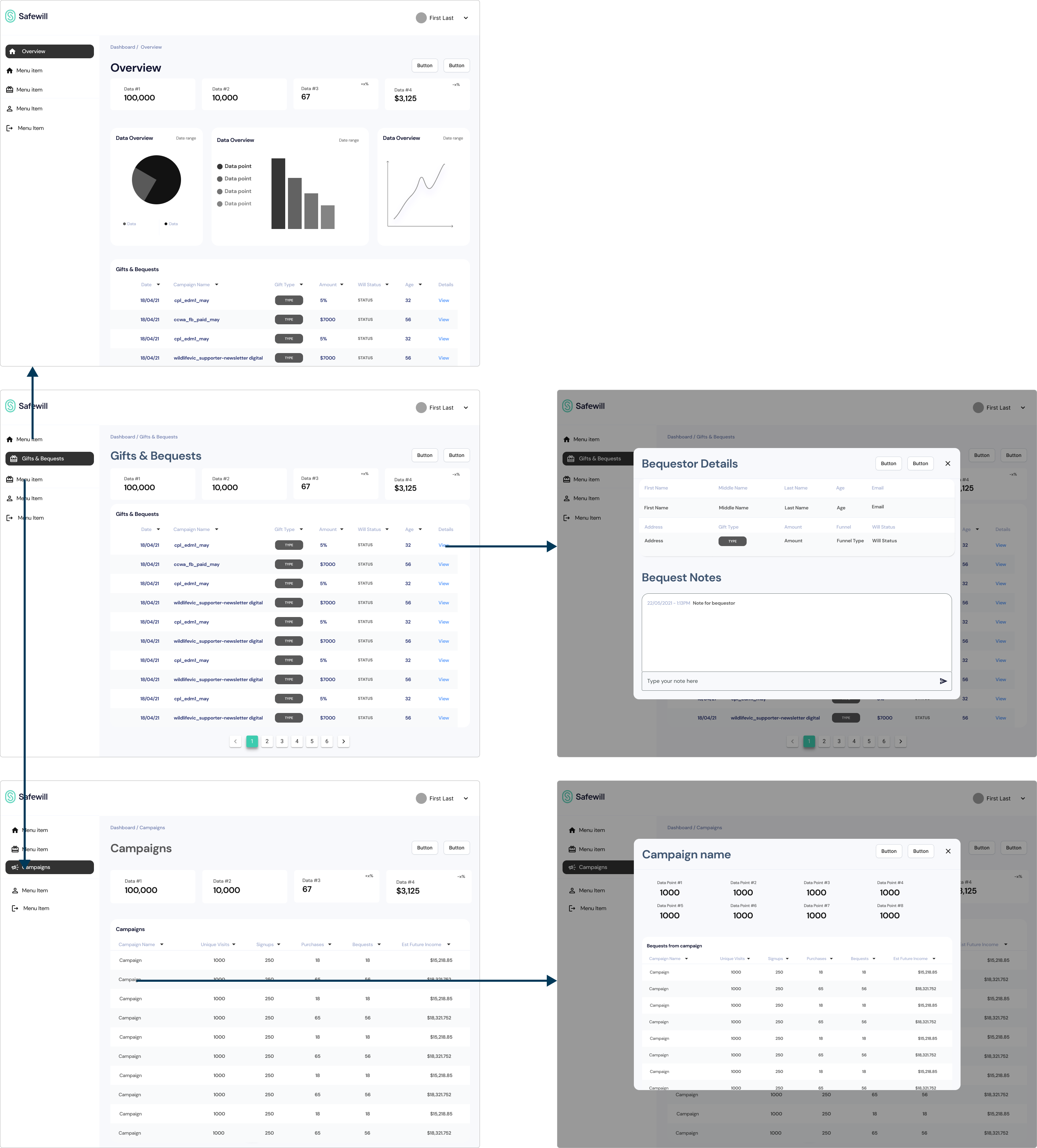
Increasing our data pipeline capabilities in order enable our customer to visualise and make good use out of that data had the goal to add a lot of value to charities.
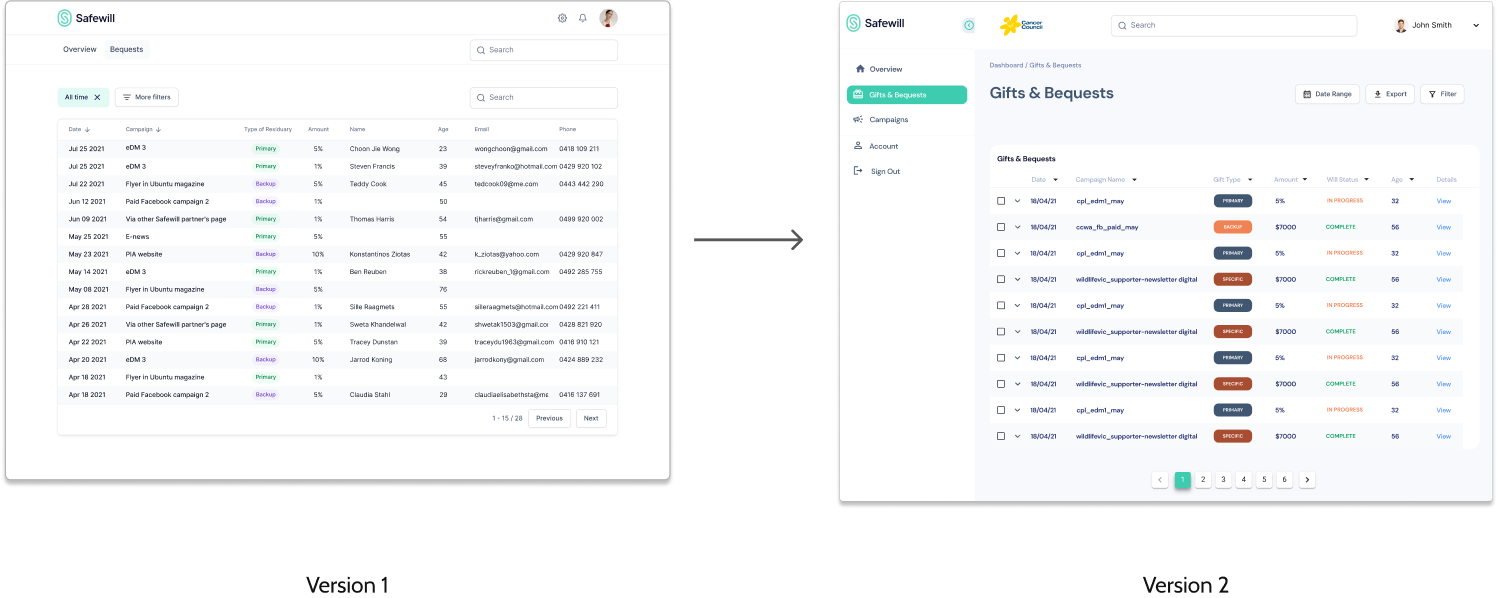
Increasing our data pipeline capabilities in order enable our customer to visualise and make good use out of that data had the goal to add a lot of value to charities.
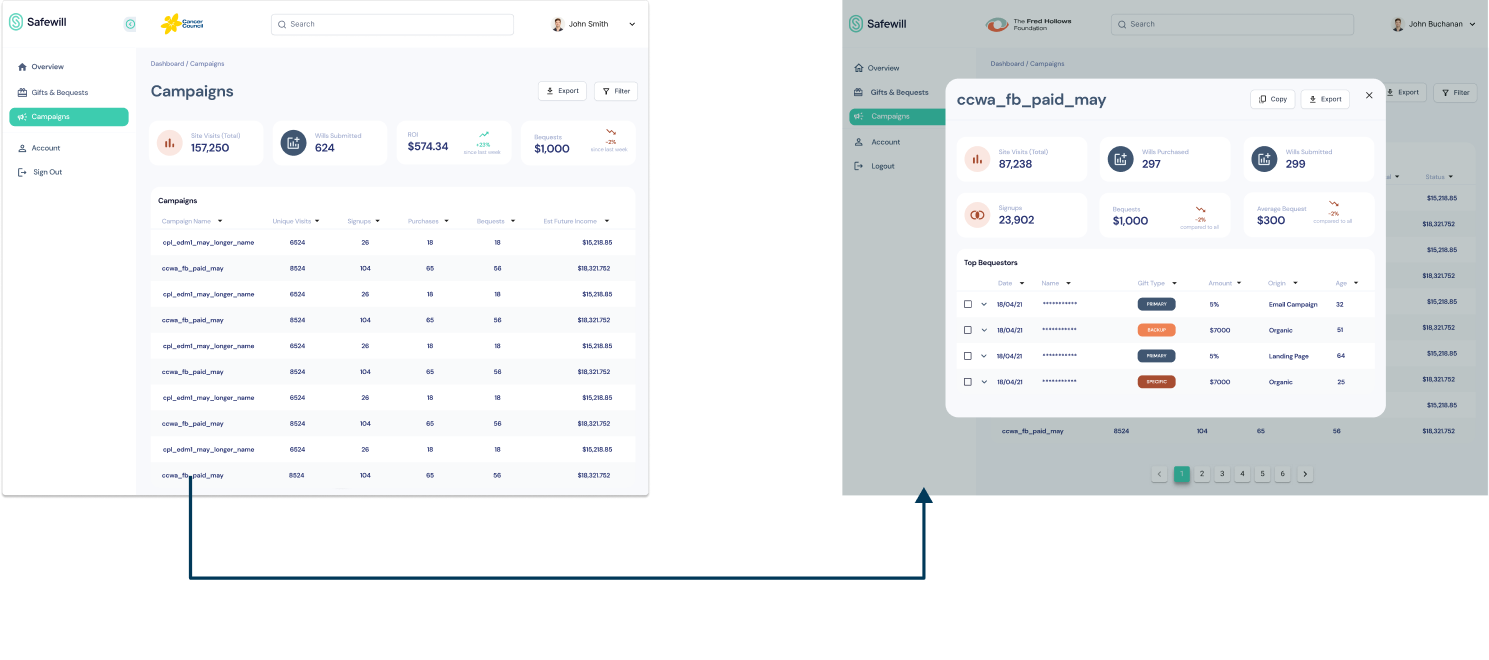
In order to nurture relationships with people who want to give for them, charities need to invest on their relationships. In order to do that, they need to have the proper tools to do so.
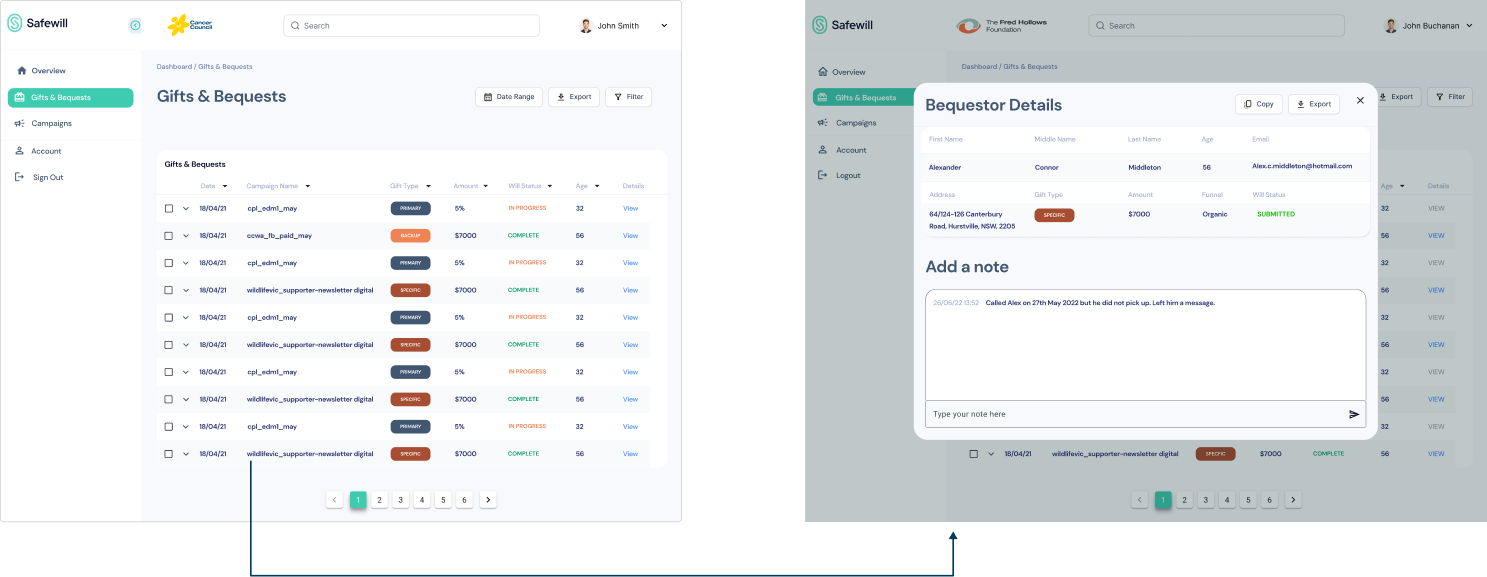
Obviously, it isn’t because our user leaves a part of their Estate to a charity of their choice
that they want to share their details with that charity. We took (and still take) data privacy
very seriously.
Charities can see bequests and demographic data from users, but unless the user chooses
to share
their information with the charity they’ll donate to, their details are redacted.
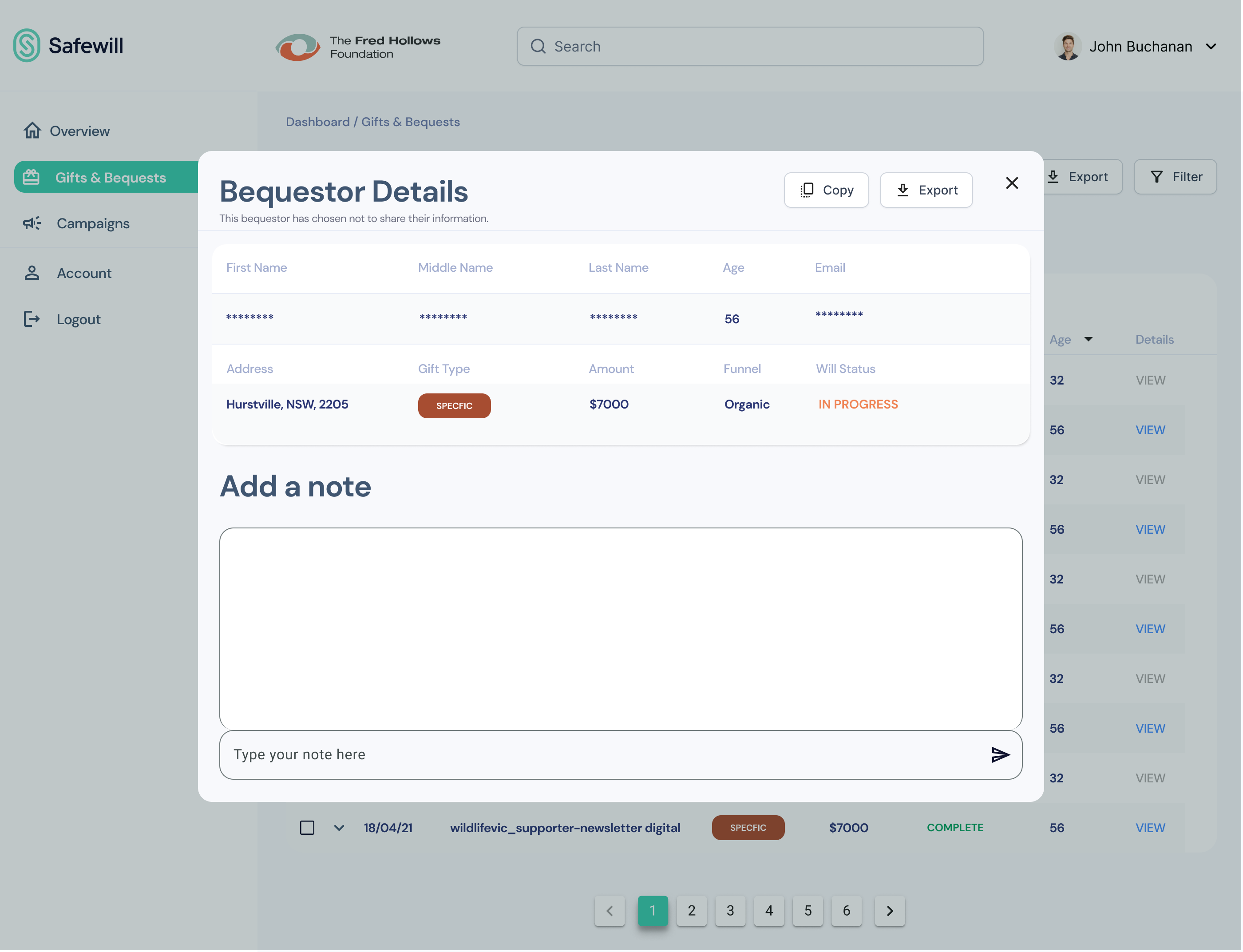
We often think resources are extremely important to achieve something. Although they make a difference, there is so much that can be done without that.
My team managed to achieve so much in a very small amout of time due to proper project and user story management and delivery. Small increments will always win vs larger scopes.
The dashboard's exporting tools and other featuers to take advantage of data are not optimal. We'll be focusing on that now to keep delivering our partners with improved decision-making.